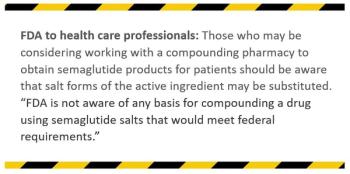
Suturing and Wound Closure, Part 3: Wound Repair in Special Areas
Here: a step-by-step review of wound closure techniques for difficult-to-treat areas, illustrated with a wealth of instructive clinical photographs.
Caring for and closing wounds in certain areas involve additional risks and require special techniques. Wounds to the hands and feet-and anywhere on the head, including the scalp, face, and lips-can be particularly difficult to care for. In earlier articles in this series on wound closure (CONSULTANT, October 2007, page 1035; CONSULTANT, October 2010, page 441), I discussed preclosure issues, traditional suturing, and alternatives to sutures. Here I describe techniques for evaluating and closing wounds in difficult-to-treat areas so as to minimize the risk of any adverse consequences and maximize the chances of a good outcome.
Figure 1 – An important part of the evaluation of hand wounds is checking for tendon lacerations by assessing tendon function. To check for a partial tendon laceration, test the strength of the injured finger: apply firm pressure to the distal phalanx with the corresponding phalanx of your dominant hand while instructing the patient to resist. A full-strength response makes tendon laceration very unlikely. Suspect a partial tendon laceration if the patient responds with partial strength. No movement is consistent with a complete tendon laceration.
WOUNDS ON THE HANDS AND FEET
The hand is one of most frequently lacerated areas of the body. Evaluation and treatment of hand wounds are often complicated by injury to the tendons and nerves that run fairly close to the surface. Even seemingly benign hand wounds may hide serious injuries. Common pitfalls in the management of hand wounds include missed foreign bodies, missed nerve injuries, and missed partial or complete tendon injuries.
Evaluation of hand wounds. Ask about the position at injury and any perceived weakness, numbness, or foreign-body sensation. During physical examination, assess 2-point discrimination on both the ulnar and radial side of all 5 digits. This is most easily done by using a paper clip bent so that the 2 prongs are about 5 mm apart.
To assess tendon function, first check isolated range of motion to determine whether there has been a complete tendon laceration; follow this with comparative strength testing, using your own corresponding finger to check for a partial tendon laceration (Figure 1). Keep in mind that the extensor tendons are extremely superficial and that the first and fifth fingers have duplicate tendons, making injury to the first and fifth digit extensors easy to miss. Most injured nerves or tendons should be repaired by a specialist within 48 hours; immediate consultation with a hand surgeon is appropriate. Nerve injuries in the less crucial areas of the hand (third and fourth fingers and radial side of the fifth finger) may not always require repair, and partial tendon injuries that involve less than 50% of the tendon are often left to heal on their own. Always apply a proper splint when there is concern for a neurovascular or tendon injury or if there is wound tension.
Figure 2 – The mallet deformity pictured here consists of inability to completely extend the distal intraphalangeal joint. If not properly treated, a mallet deformity may become permanent.
Nail bed injuries. Lacerations to the fingertip, especially those caused by a crushing mechanism, may result in nail bed injuries that require special attention. If the nail base is avulsed, remove the entire nail and repair the bed with absorbable 6.0 suture material. Before repairing the nail bed, obtain radiographs and assess carefully for mallet deformity (Figure 2). Suturing the nail bed is quite difficult, because the tissue here is so thin. Following nail bed repair, replace the removed fingernail and sew it in place at both lateral edges. Leave the old nail on for 3 weeks: it serves as a splint, maintains the nail fold, and helps protect sensitive tissue. After 3 weeks, remove the old nail. The new nail may take up to 6 months to completely regrow, and the patient should be warned about the possibility of permanent nail deformity.
If the nail is not avulsed but is involved in the laceration or borders on it, placement of a stitch through the nail may be warranted. An 18- to 21-gauge hypodermic needle used as a twist drill can make an adequate hole in less than 30 seconds.
Subungual hematomas. Isolated subungual hematomas that occur in the absence of a nail-base avulsion can usually be treated with drainage alone. These hematomas should not be left untreated; they are quite painful if not drained. Some authorities recommend using a portable cautery device to drain a subungual hematoma; however, the heat such devices produce is quite painful. Simple trephination using a hypodermic needle as a twist drill can be performed with essentially no pain because the nail is not innervated and the hematoma prevents the needle tip from touching the underlying nail bed.
There is some controversy regarding the merits of nail bed repair in subungual hematomas. Some authorities recommend nail removal and nail bed repair for hematomas that involve more than 50% of the nail. However, given the difficulty of nail bed repair and the pain involved, it may be prudent to limit treatment to trephination alone even if 100% of the nail is involved.
Wounds on the dorsum of the hand or foot. Repair of wounds in these locations using simple interrupted or running stitches often results in wound inversion because the skin in these areas is so loose. Wound inversion can slow healing and increase the risk of dehiscence. The solution is to use the horizontal mattress stitch (Figure 3). The horizontal mattress stitch results in eversion (because no suture crosses over the top of the laceration); eversion typically leads to better healing.
Figure 3 – The wound on the back of this patient’s right wrist was repaired with horizontal mattress sutures to prevent wound inversion, which can slow healing and increase the risk of dehiscence.
WOUNDS ON THE SCALP, FACE, AND LIPS
The scalp, face, and lips are probably not far behind the hands and fingers in terms of how frequently they sustain lacerations. Although damage to deep structures is less common in these areas, a good understanding of the underlying anatomy is essential to prevent the complications of a missed injury. Important structures to be aware of include the facial nerve, the lacrimal duct, and the salivary duct. Fortunately, these structures are rarely severed because they are fairly well protected-and because most lacerations of the head and face result from a blunt mechanism.
Suggested Equipment for Wound Repair in Special Areas
• Overhead light
• Rolling stool
• Suture kit
• Irrigation setup
• Suture material
• Tissue adhesive
• Staple gun
• SteriStrips
• Gloves
• Povidone-iodine
• Anesthetic
• Sterile saline
• Assistant if necessary
Scalp lacerations. These result most often from blunt trauma. Staples are commonly used to close scalp wounds because hair can make both suturing and removal of sutures more difficult. In addition, because the scar will be hidden in the hair, there is less concern for cosmesis. However, staples may not be appropriate for scalp wounds that are very deep or very long or that have excessive bleeding. In deep wounds, some authorities recommend that the galea be closed with 4.0 nylon and the muscle closed with 4.0 vicryl before skin closure. Other authorities feel that suturing through muscle is both futile and potentially disadvantageous, especially when the wound can be adequately closed by suturing through the skin alone. Large scalp wounds with excessive, persistent bleeding should be closed immediately. A running interlocking stitch provides better hemostasis than other stitching techniques or staples and is preferred in this setting (Figure 4).
Figure 4 – The laceration on this patient’s scalp was bleeding excessively and persistently. It was thus closed with a running interlocking stitch, which provides better hemostasis than either staples or other suturing techniques in this setting.
Small scalp lacerations can often be closed with a method called the "hair apposition technique" (mnemonic, H-A-T). This technique can be an especially appealing option in children because it tends to minimize discomfort to the patient. Contraindications to use of HAT include hair length less than 3 cm, wound length greater than 10 cm, gross wound contamination, active bleeding, and wound tension. After appropriate wound cleansing and hemostasis, gather hair on both sides of the wound into 2 bundles, then twist these 180 degrees around each other. Apply tissue adhesive to the hair to hold it in place. An assistant is usually required for this technique, and the process is not necessarily easy. A survey of the author’s colleagues revealed that few favor the use of HAT.
Lacerations of the lip and tongue. Repair of these wounds presents a unique set of challenges, including increased risk of infection and difficulty with closure. These difficulties can be even more pronounced in children, who may not be able to cooperate with the examination and repair. Lacerations less than 1 to 2 cm in length often heel well without stitches, provided there is not excessive wound tension holding the edges of the laceration apart. Fortunately, minimal wound tension allows primary healing of many wounds in non-cosmetic areas. Larger lacerations in the mouth should usually be sutured, especially if wound tension keeps the edges separated or if there is a flap, such as on the edge of the tongue. If neither of these issues is involved, the decision of whether to repair or to allow primary healing can be made on a case-by-case basis.
Figure 5 – To facilitate the suturing of a tongue wound, have an assistant use dry gauze to hold the tip of the tongue in slight traction.
Figure 6 – The wound on this patient’s tongue was closed with chromic gut, an absorbable suture that is often used on mucosal surfaces to obviate the need for suture removal. The sutures were loosely tied to allow for swelling, which is common in a sutured tongue.
Suturing the tongue is difficult; the process (when necessary) may be facilitated by use of a clip, stay suture, or dry gauze applied to the tip of the tongue and held in slight traction by an assistant (Figure 5). Use chromic gut and tie stitches loosely, since the tongue often swells (Figure 6). Prophylactic antibiotics are probably wise if the wound is closed.
Lacerations of the lip are common. Many are complete perforations, caused by compression against the teeth or mandible; thus, always search for an opposing laceration on the inside of the mouth and irrigate from outside to inside. If a tooth is broken and not recovered, assume it is hidden within the lip or face until proved otherwise. Begin closure of lip lacerations with the first stitch aligning the vermilion border if this is involved; the remainder of the wound can be closed in the usual manner. Some authors recommend burying knots and using dissolvable stitches on mucous membrane surfaces. However, I find that the added difficulty of this technique makes precise alignment of wound edges significantly more challenging; thus, I opt for more standard techniques instead. Through-and-through lacerations should be closed on the inner side first.
In children, procedural sedation is often necessary if lip or tongue lacerations require suture closure. The lip or tongue simply cannot be held still with force. The same may also be true for other areas, such as the eyelid, that cannot be immobilized. Remember always to use dissolvable sutures when procedural sedation is required; if you do not, you are likely to regret not having used them when it is time for suture removal.
Lacerations near the eye are high risk for a variety of reasons. Fortunately, most of these wounds are on the eyebrow and are relatively straightforward. However, if fat is protruding from the wound, if the lid margin is involved, or if the laceration is in close proximity to the lacrimal duct, an ophthalmologist or plastic surgeon should be called to close the wound. Lacerations that may involve the levator palpebrae or that are very close to the lower lid should also prompt specialist consultation: if not expertly closed, they may heal with laxity or contractures and lead to asymmetric eye apertures and poor cosmetic appearance.
WOUND REPAIR IN SPECIAL AREAS: PITFALLS & PEARLS
• Before closing a hand wound, be sure to evaluate thoroughly for foreign bodies, nerve injuries, and partial or complete tendon injuries.
• Most injured nerves or tendons should be repaired by a specialist within 48 hours; immediate consultation with a hand surgeon is appropriate.
• If the nail base is avulsed, remove the entire nail and repair the bed. Then replace the removed fingernail and sew it in place at both lateral edges. The old nail should be left on for 3 weeks; it serves as a splint, maintains the nail fold, and helps protect sensitive tissue.
• Subungual hematomas should be treated. A simple method is to use a hypodermic needle as a twist drill; because the nail is not innervated and the hematoma prevents the needle tip from touching the underlying nail bed, this maneuver is essentially painless.
• To prevent inversion of wounds on the dorsum of the hand or foot, use the horizontal mattress stitch to close them.
• Large scalp wounds with excessive, persistent bleeding should be closed immediately. A running interlocking stitch is most effective in this setting: it provides better hemostasis than either staples or other stitching techniques.
• Lacerations of the lip or tongue that are less than 1 to 2 cm in length often heal well without stitches.
• When a tongue laceration must be sutured, use chromic gut and tie stitches loosely to allow for swelling.
• If a tooth is broken and not recovered, assume it is hidden within the lip or face until proved otherwise.
• Begin closure of lip lacerations with the first stitch aligning the vermilion border if this is involved.
References:
FOR MORE INFORMATION:
•Hollander JE, Singer AJ. Laceration management. Ann Emerg Med. 1999;34:356-367.
•Pregerson DB. Quick Essentials: Emergency Medicine. 2nd ed. Carlsbad, CA: ERPocketBooks. com. 2006.
•Pregerson DB. Cornucopia: Emergency Medicine. Carlsbad, CA: EMResource.org. 2008.
•Schaider J, Hayden SR. Rosen & Barkin’s 5-Minute Emergency Medicine Consult. 2nd ed. Philadelphia: Lippincott Williams & Wilkins; 1999.
•Tintinalli JE, Kelen GD, Stapczynski JS, eds. Emergency Medicine: A Comprehensive Study Guide. 6th ed. New York: McGraw-Hill; 2003.
Newsletter
Enhance your clinical practice with the Patient Care newsletter, offering the latest evidence-based guidelines, diagnostic insights, and treatment strategies for primary care physicians.































































































































































































































































































































